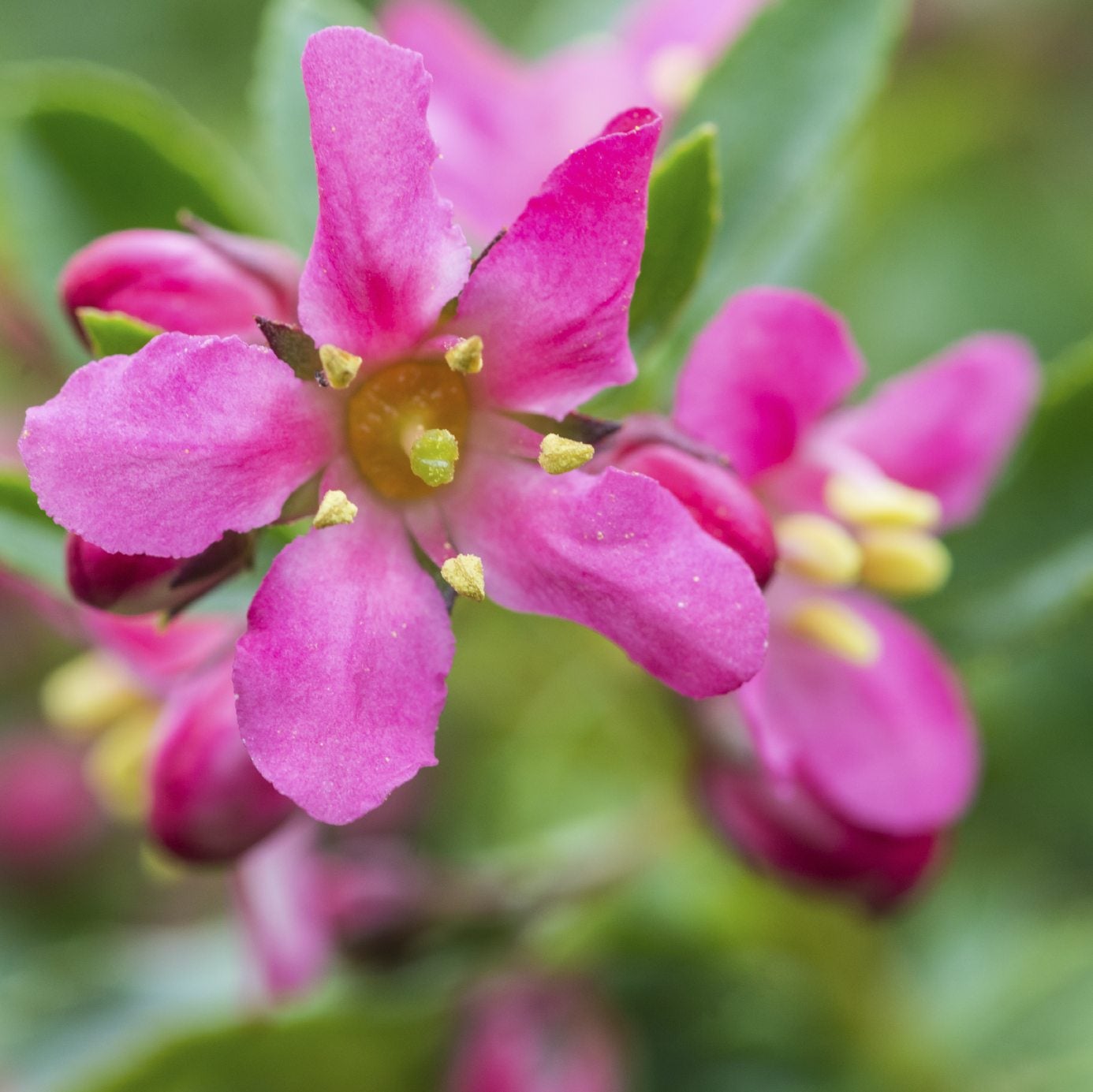Escallonia Shrub Info: Tips On Growing An Escallonia Hedge


Escallonia shrubs are versatile shrubs, perfect for a flowering hedge or specimen planting. This is an exceptional evergreen, thanks to its fragrance. The glossy green leaves offer a pungent aroma while the flowers have a light, sweet smell. Caring for escallonias is not difficult. Read on for escallonia plant care information.
Escallonia Shrub Info
Escallonia shrubs grow relatively fast and have both attractive foliage and lovely flowers. The blossoms are tube-shaped, generally white, pink or red, and appear on leafy panicles in summer. Plants can grow to 15 feet (4.5 m.) in either direction, depending on the cultivar. Since escallonia is tolerant of salt spray, you can start growing an escallonia hedge even if you live in coastal areas. Escallonia also makes an attractive garden specimen when planted with plenty of elbow room. Plant this shrub in U.S. Department of Agriculture plant hardiness zones 8 through 10.
How to Grow Escallonia Shrubs
You may be wondering how to grow escallonia shrubs. Despite their lovely, delicate flowers, escallonias are self-sufficient shrubs that grow without much maintenance if planted appropriately. If you read up on escallonia shrub info, you will find that the plants do best in full sun in well-drained soil. In hot climates, caring for escallonias is easier if you plant the shrubs in partial shade. Select a location to plant escallonia shrubs where they are protected from chill winds. If you are growing an escallonia hedge, plant the shrubs closer together than for specimen planting. These plants are not expensive and, if you have patience for a few years after planting, you will have a lovely hedge.
Caring for Escallonias
When it comes to escallonia plant care, don’t think you will have to invest many hours meeting this shrub’s needs. Generally, well-planted escallonia shrubs do not require maintenance. For example, escallonias do not require pruning to keep them healthy, but they accept pruning. If yours are looking too big for their garden location and you decide to prune, shear them lightly in summer after flowering is done for the season. To reduce the size of big shrubs, you can remove up to 1/3 of the old wood just after the plant blossoms. If you have read some escallonia shrub info, you know that the plant is full of buds in spring. If you prune in spring, you’ll drastically reduce the numbers of flowers on the plant. Caring for escallonias involves providing regular irrigation during dry periods. This helps keep the shrubs healthy and filled with flowers.
Gardening tips, videos, info and more delivered right to your inbox!
Sign up for the Gardening Know How newsletter today and receive a free copy of our e-book "How to Grow Delicious Tomatoes".

Teo Spengler is a master gardener and a docent at the San Francisco Botanical Garden, where she hosts public tours. She has studied horticulture and written about nature, trees, plants, and gardening for more than two decades. Her extended family includes some 30 houseplants and hundreds of outdoor plants, including 250 trees, which are her main passion. Spengler currently splits her life between San Francisco and the French Basque Country, though she was raised in Alaska, giving her experience of gardening in a range of climates.
-
 Looking For Plants To Give You The Soft And Fuzzies? Try These 5 Fuzzy Leaf Plant Options
Looking For Plants To Give You The Soft And Fuzzies? Try These 5 Fuzzy Leaf Plant OptionsLovers of texture, drama, silver foliage and tactile plants will adore these special sensory garden additions. These fuzzy leaf plant options will leave you all aglow
By Susan Albert
-
 Get Ready For A Summer Of Hummers! Grow These Full Sun Hummingbird Plants and Flowers
Get Ready For A Summer Of Hummers! Grow These Full Sun Hummingbird Plants and FlowersIf you’re lucky enough to enjoy a sunny backyard, make sure you are maxing out on your pollinator opportunities and grow these full sun hummingbird plants and flowers
By Tonya Barnett